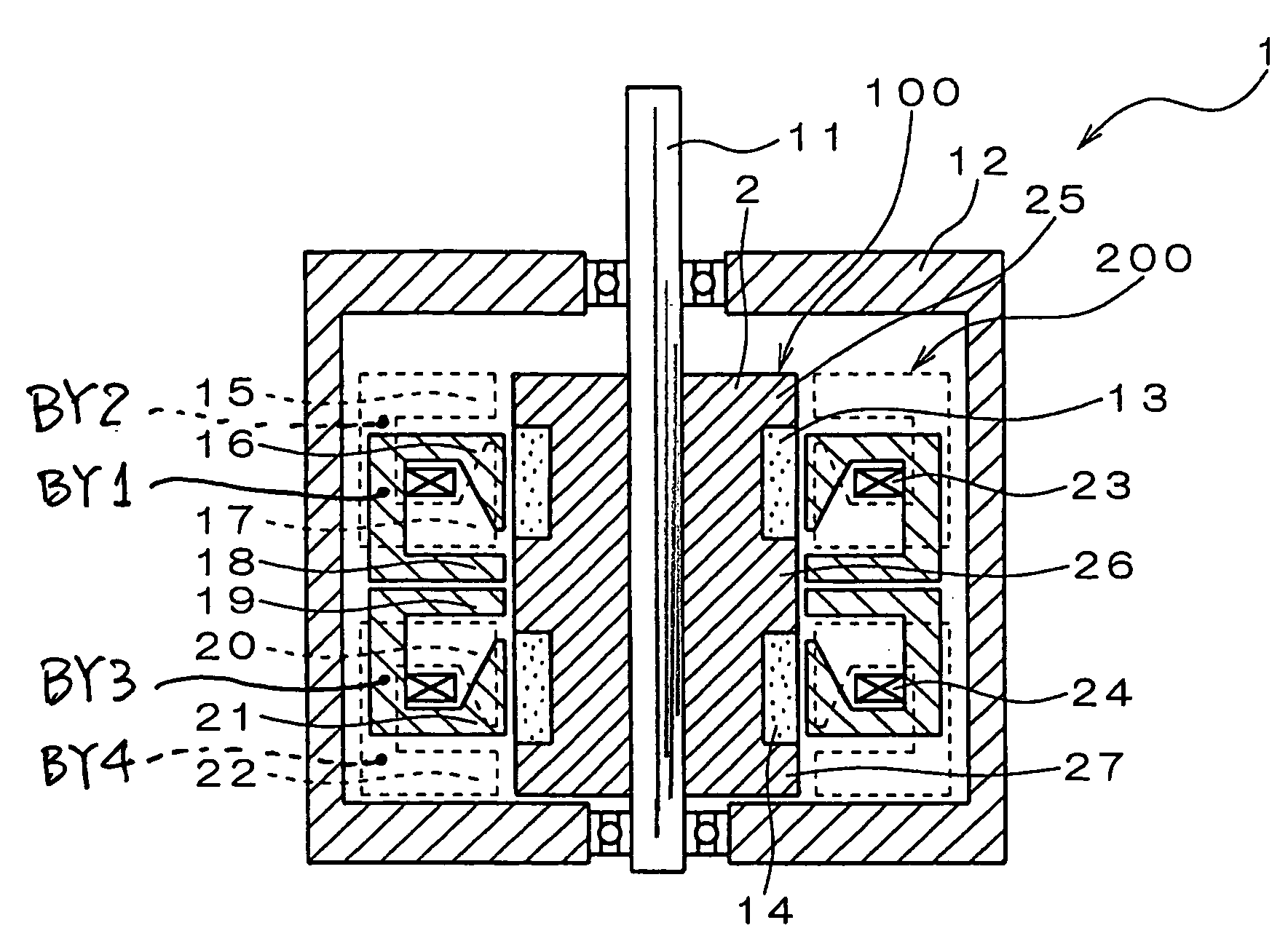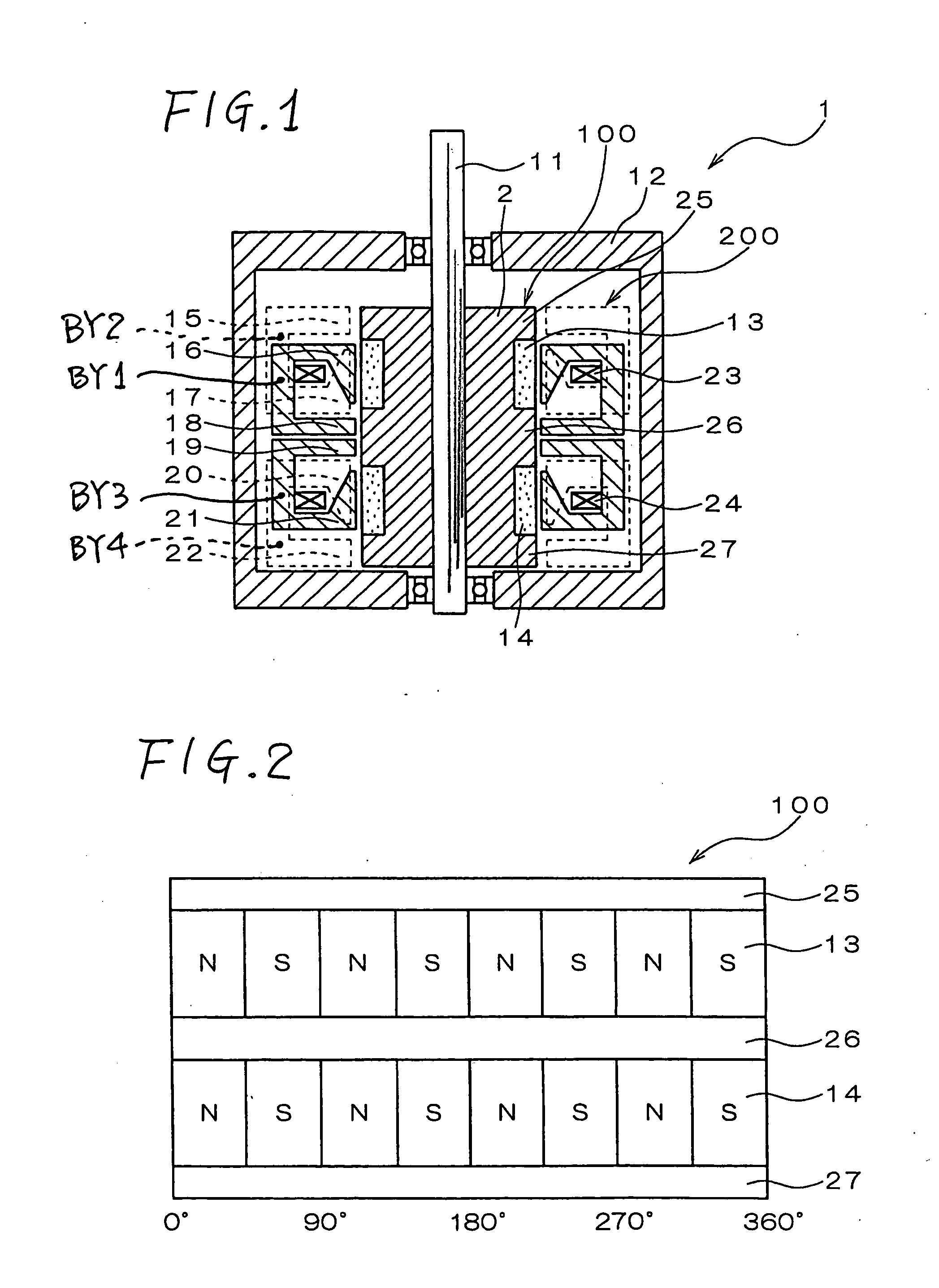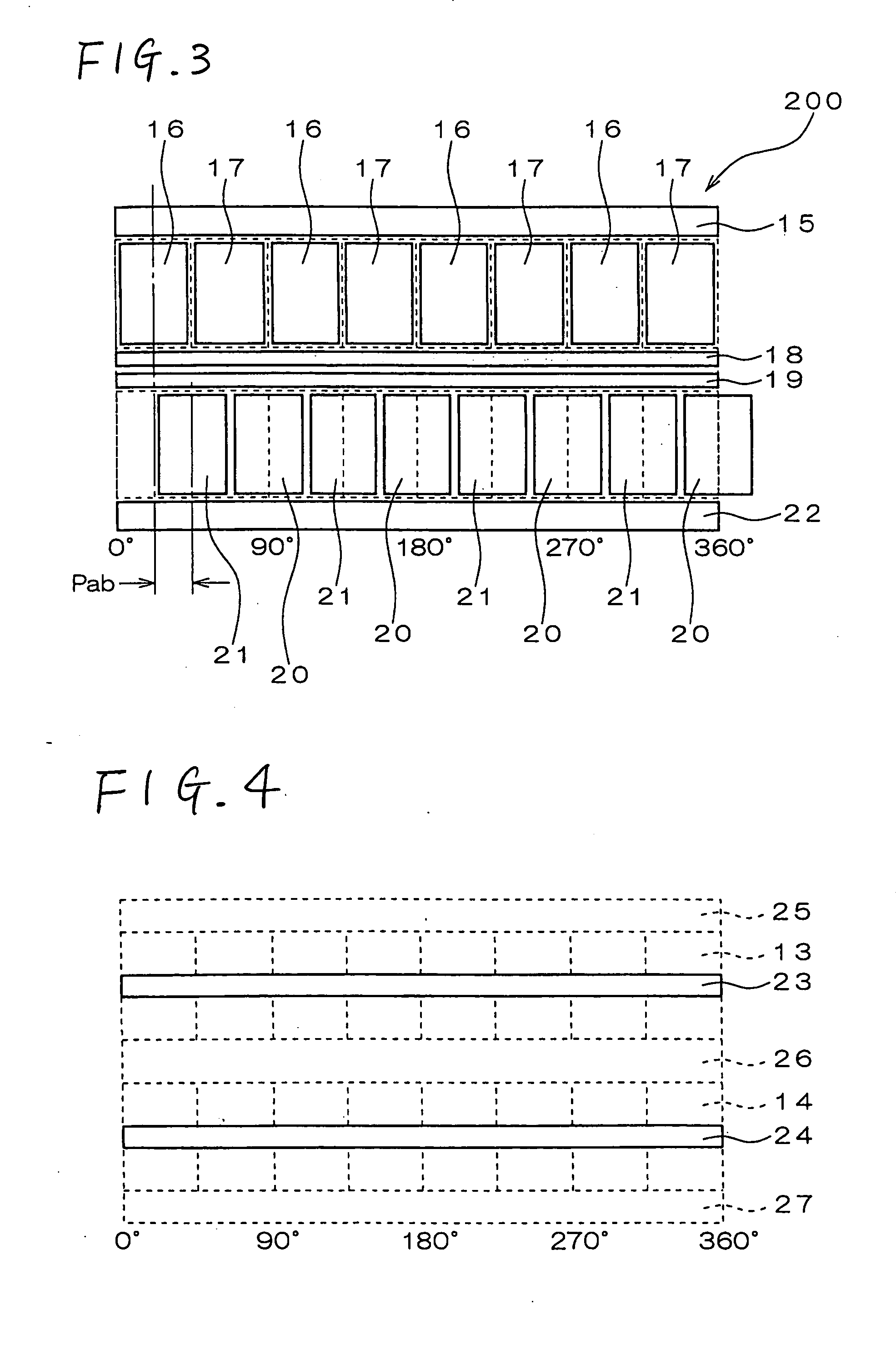AC motor and control device therefor
a control device and motor technology, applied in the direction of dynamo-electric converter control, magnetic circuit rotating parts, shape/form/construction, etc., can solve the problems of excessive torque ripples or vibrations, noise, and deterioration of the driving efficiency of transistors, and achieve low cost, increase torque generation, and small size
- Summary
- Abstract
- Description
- Claims
- Application Information
AI Technical Summary
Benefits of technology
Problems solved by technology
Method used
Image
Examples
first modification
[0121] (First Modification)
[0122]FIG. 17 is a vertical cross section of a modification of the AC motor, in which the shapes of the stator poles and the stator-side neutral poles are improved. In the AC motor 1 shown in FIG. 1, the stator poles and the stator-side neutral poles of the individual phases are located so that the magnetic circuits extending from the outer periphery of the stator to the air gap between the stator 200 and the rotor 100 are formed at different positions in the direction along the rotor shaft 11. Therefore, the length of the motor is so much the larger. Contrarily, in the modified AC motor shown in FIG. 17, the magnetic circuits extending from the outermost diameter of the stator having P-phase stator poles 37 and a P-phase stator-side neutral pole 38 to the air gap, are formed at the same position in the axial direction of the rotor. In short, the magnetic circuits are formed on the same circumference so that the length along the rotor shaft 11 may be so mu...
second modification
[0124] (Second Modification)
[0125] Two-phase AC motors, each consisting of a P phase and a Q phase, have been described with reference to FIGS. 1 to 21. The similar concept may be applied to an N-phase AC motor (N is more than 2) by providing the N number of modules (actuators) for the respective phases.
[0126] Specifically, the structure illustrated in FIG. 1 includes two-phase AC motor, and thus the motor includes two actuators whose phase difference is 90 degrees. In this regard, by providing the N number of actuators in the axial direction and by relatively offsetting the phases from each other by 360 / N degrees in electrical angle, an N-phase AC motor may be structured.
[0127] As shown in FIG. 17, in case a composite construction part of which is made composite, the composite components may be serially arranged in the axial direction, while offsetting the phases by the electrical angle of 360 / N, whereby an N-phase AC motor may be constituted. In this connection, however, the str...
third modification
[0128] (Third Modification)
[0129] In the AC motor described above referring such as to FIG. 1, a principal torque constant, i.e. an output torque which is obtained by passing the same current through the same winding, may be increased by multipolarization. However, the multipolarization arises a problem that the distance between the individual stator poles is shortened to thereby increase leakage flux from between the individual stator poles. Such an increase in the leakage flux between poles causes reduction of flux which is effective in generating torque, thereby reducing generation of torque and reducing power factors, and thus ultimately reducing efficiency. The increase also causes excessive torque ripples, vibration or noise.
[0130] FIGS. 22 to 25 show transverse cross sections of an AC motor for reducing leakage flux between stator poles. These figures illustrate a structure in which the number of poles is increased to 16. FIGS. 22 to 25 show, respectively, the configurations...
PUM
 Login to View More
Login to View More Abstract
Description
Claims
Application Information
 Login to View More
Login to View More - R&D
- Intellectual Property
- Life Sciences
- Materials
- Tech Scout
- Unparalleled Data Quality
- Higher Quality Content
- 60% Fewer Hallucinations
Browse by: Latest US Patents, China's latest patents, Technical Efficacy Thesaurus, Application Domain, Technology Topic, Popular Technical Reports.
© 2025 PatSnap. All rights reserved.Legal|Privacy policy|Modern Slavery Act Transparency Statement|Sitemap|About US| Contact US: help@patsnap.com



